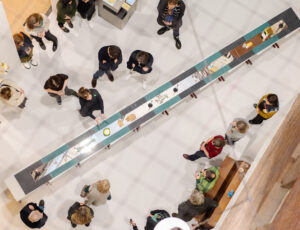On Thursday 2 December 2010 at 11.00 , Johan Hoorn Lorentz Fellow, will hold a seminar in NIAS’s Lecture Room about the concept of creativity.
Science, technology, art, and business thrive on creativity. Yet, are we talking about discovering novelties or are we constructing them? And what is the creative process actually about? Association, integration, and evaluation are often-mentioned ingredients of the creative process but can easily be extended by incubation, abstraction, adaptation, and so on. How do these concepts relate to one another?
The seminar “Creativity shrinks distances (and in doing so, expands horizons)” is meant as an inventory of perspectives on creativity as well as a serious attempt to jointly evaluate the meaning of the different concepts, to define the different mechanisms, and to try to come to a level of scholarly discourse that escapes the narrow practices of individual areas of inquiry.
The concept of creativity is surrounded by a great number of theories and ideas, which all seem to have a point, sometimes seem to conflict with each other, and at other times seem to be complementary. There is the idea of creativity as an evolutionary process, socially driven, building upon prior ideas, allowing co-creation, and advocating a more or less deterministic world view (cf. the Marxist view on technological innovation). New technology always has its predecessors, science merely ‘discovers’ what is already there, independent of the individual. There is also the idea of the disruption of a grand tradition, the paradigm shift, forced by the individual psychology of the genius who with a flash of insight sees what others do not see. And then there is the role of chance, probability, ‘serendipity’ or systematically adding noise to a pattern (cf. fractals), the results of which may be interpreted as an artistic object trouvé.



